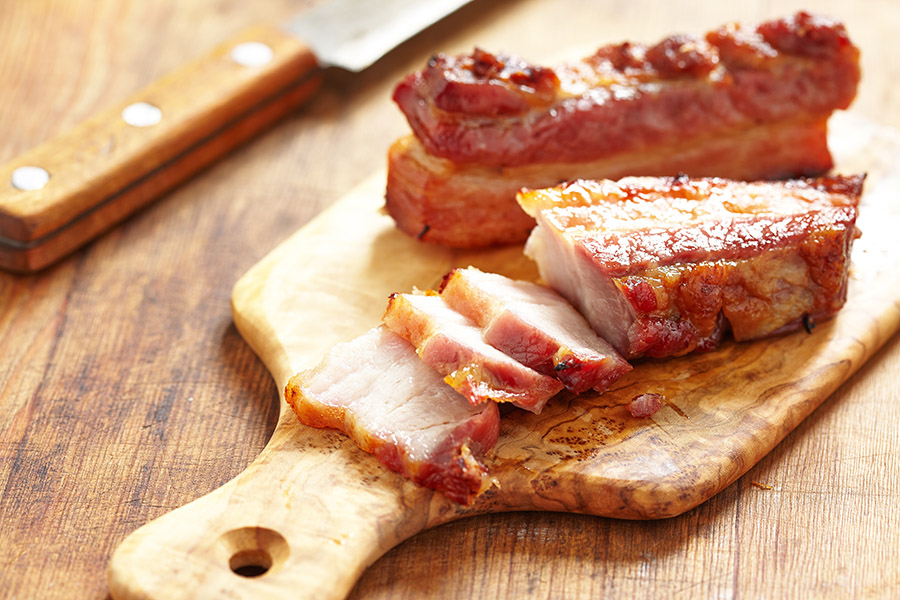Pork belly has been making a bigger blip on the culinary radar in recent months. It’s on menus, in magazine recipes, cooking shows, YouTube videos. The ideas abound. In fact, pork belly is the #1 most-requested product from Lobel’s of New York customers and site visitors.
So, we are very pleased to introduce Lobel’s Berkshire Pork Belly, available in frozen 2-pound slabs.
Given the wild popularity, nay, obsession, fascination, and hype about everything that fuels our craving for bacon, is it any wonder that curious epicureans have discovered, or rediscovered, the joys of fresh pork belly.
After all, bacon is simply pork belly that has been cured and/or smoked.

Professional and home cooks alike are pushing the envelope to discover that pork belly offers so many more possibilities for incredibly rich and delectable preparations than just bacon.
As the name implies, pork belly is cut from the soft underside of a pig with the skin, typically, left intact. The striations alternating between lean flesh and creamy fat are the visual cues that make it easily recognizable as, what the British call, streaky bacon.
On its own, unprocessed pork belly is a joy unto itself and has many uses. Its natural flavor is somewhere between ham and bacon.
Search bacon recipes and Google will return 79 million citations. Try pork belly recipes and you’ll get nearly 10 million results—a true testament to its versatility.
Braising pork belly is a frequent means of preparation. The slow-cooking, moist-heat method tenderizes the lean pork and renders much of the fat as it cooks. Allow the braised belly to cool in the fridge, cut it into sections and crisp in a frying pan before serving for breakfast, lunch, or dinner.
Marinating and grilling 2-inch-wide strips of pork belly on the slow side of an indirect grill fire produces a deliciously lush and juicy result that is very similar to Chinese BBQ pork, known as char siu.
Chunks of fresh belly can be substituted for salt pork in the early stages of preparing many dishes to add a meaty flavor, but with far less sodium.
Long strips of pork belly are often used in French cuisine to line the pan in which a terrine is prepared, and then again on top of the terrine so it is essentially wrapped in belly to add flavor and richness.
When preparing such French classics as coq au vin or beef bourguignon, short, fat matchstick-size pieces of pork belly, called lardons, are sautéed initially to render their fat and then combined with pearl onions and mushrooms.
Also, belly can simply be rendered for its fat by slow cooking it in a pan. The rendered fat can be used as a cooking medium for everything from eggs and potatoes to vegetables, poultry, and seafood.
Check out this video of our friend, Troy, of T-Roy Cooks making a crispy pork belly with an apple herb sauce!
What’s your favorite use for pork belly?



Leave Your Response